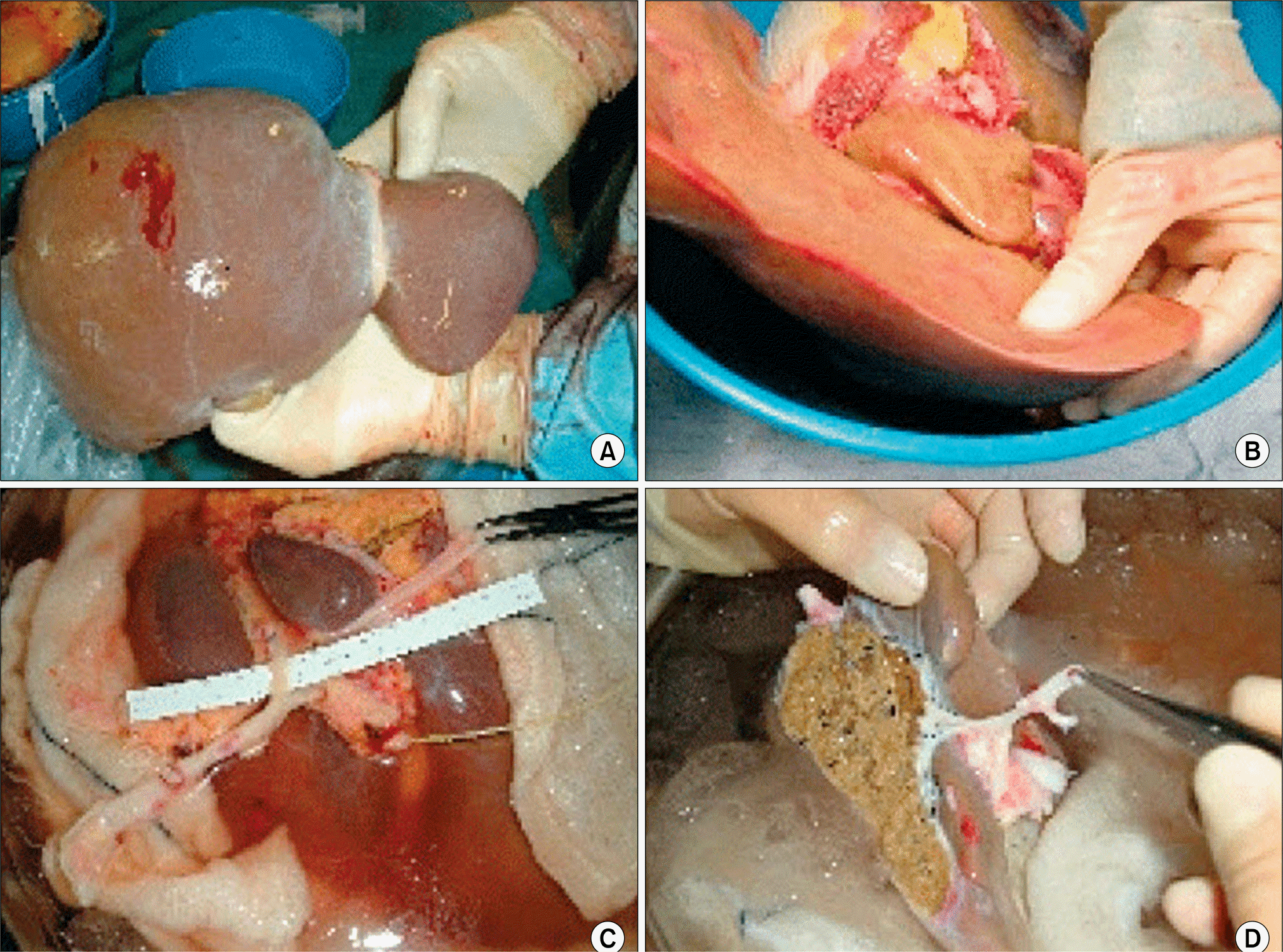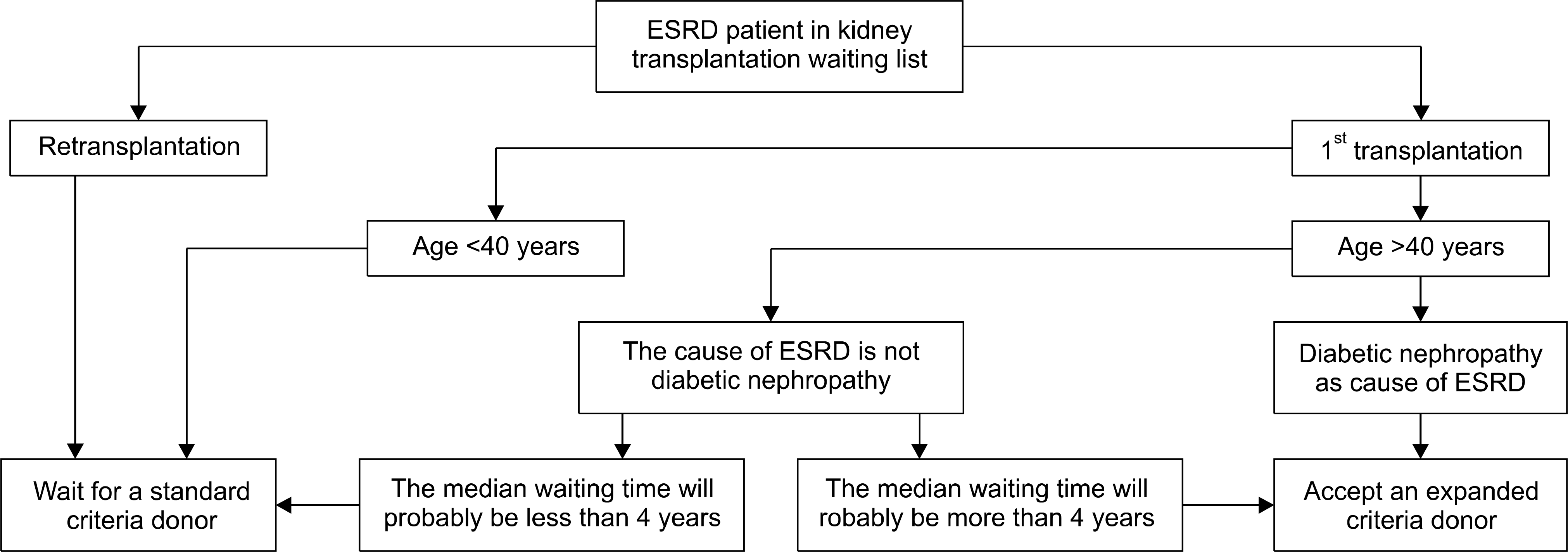Abstract
Due to an impressive reduction in traffic mortalities in recent years, stroke has replaced trauma as the main cause of brain death, and the mean age of donors has increased gradually. As an immediate consequence, donations are growing increasingly more complex and less effective in terms of the number of recipients transplanted, particularly with organs affected negatively by age. The huge regional variability in donation activity observed suggests that there is room for improvement. Generally, liver transplantation extended criteria donors (ECD) are divided by donor-specific characteristics: age >65 years, steatosis >30% of graft volume, long interval between brain death and procurement or graft infected by hepatitis B or C, cold ischemia >12 hours, living donor grafts, split liver grafts, and liver grafts from donors after cardiac death. Deceased donor kidneys are classified as ECD if they meet either of the following conditions: (1) Donor age more than or equal to 60-years or (2) donor age 50 to 59 years, with at least two of the following criteria: serum creatinine more than 1.5 mg/dL, death due to cerebrovascular accident, or history of hypertension. No guidelines exist for allocating an ECD organ. Accurate assessment of the relative risk of graft failure associated with various combinations of donor characteristics is an essential prerequisite for counseling patients, making the decision to accept a transplant offer, evaluating programs, and developing allocation policy.
Go to : 
References
2). Matesanz R, Marazuela R, Domínguez-Gil B, Coll E, Mahillo B, de la Rosa G. The 40 donors per million population plan: an action plan for improvement of organ donation and transplantation in Spain. Transplant Proc. 2009; 41:3453–6.

3). Tuttle-Newhall JE, Krishnan SM, Levy MF, McBride V, Orlowski JP, Sung RS. Organ donation and utilization in the United states: 1998–2007. Am J Transplant. 2009; 9:879–93.

4). Snell GI, Westall GP. Donor selection and management. Curr Opin Organ Transplant. 2009; 14:471–6.

5). Perera MT, Mirza DF, Elias E. Liver transplantation: issues for the next 20 years. J Gastroenterol Hepatol. 2009; 24(Suppl 3):S124–31.
6). Gastaca M. Extended criteria donors in liver transplantation: adapting donor quality and recipient. Transplant Proc. 2009; 41:975–9.

7). Lee SG, Hwang S, Moon DB, Ahn CS, Kim KH, Sung KB, et al. Expanded Indication criteria of living donor liver transplantation for hepatocellular carcinoma at one large-volume center. Liver Transpl. 2008; 14:935–45.

8). Yao FY. Liver transplantation for hepatocellular carcinoma: beyond the Milan criteria. Am J Transplant. 2008; 8:1982–9.

9). Durand F, Renz JF, Alkofer B, Burra P, Clavien PA, Porte RJ, et al. Report of the Paris consensus meeting on expanded criteria donors in liver transplantation. Liver Transpl. 2008; 14:1694–707.

10). Feng S, Goodrich NP, Bragg-Gresham JL, Dykstra DM, Punch JD, DebRoy MA, et al. Characteristics associated with liver graft failure: the concept of a donor risk index. Am J Transplant. 2006; 6:783–90.

12). Moore J, Ramakrishna S, Tau K, Cockwell P, Eardley K, Little MA, et al. Identification of the optimal donor quality scoring system and measure of early renal function in kidney transplantation. Transplantation. 2009; 87:578–86.

13). Rao PS, Schaubel DE, Guidinger MK, Andreoni KA, Wolfe RA, Merion RM, et al. A comprehensive risk quantification score for deceased donor kidneys: the kidney donor risk index. Transplantation. 2009; 88:231–6.

14). Harada KM, Mandia-Sampaio EL, de Sandes-Freitas TV, Felipe CR, Park SI, Pinheiro-Machado PG, et al. Risk factors associated with graft loss and patient survival after kidney transplantation. Transplant Proc. 2009; 41:3667–70.

15). Fraser SM, Rajasundaram R, Aldouri A, Farid S, Morris-Stiff G, Baker R, et al. Acceptable outcome after kidney transplantation using “expanded criteria donor” grafts. Transplantation. 2010; 89:88–96.

16). Hirth RA, Pan Q, Schaubel DE, Merion RM. Efficient utilization of the expanded criteria donor (ECD) deceased donor kidney pool: an analysis of the effect of labeling. Am J Transplant. 2010; 10:304–9.

17). Domagala P, Kwiatkowski A, Perkowska-Ptasinska A, Wszola M, Panufnik L, Paczek L, et al. Assessment of kidneys procured from expanded criteria donors before transplantation. Transplant Proc. 2009; 41:2966–9.

18). Re L, Curcio D, Rial M, Goldberg J, Casadei D. Results of a prospective allocation policy of expanded criteria donors kidneys based on clinical parameters. Clin Transplant. 2010; 24:229–35.

19). Goplani KR, Firoz A, Ramakrishana P, Shah PR, Gumber MR, Patel HV, et al. Deceased donor organ transplantation with expanded criteria donors: a singlecenter experience from India. Transplant Proc. 2010; 42:171–4.

20). Grams ME, Womer KL, Ugarte RM, Desai NM, Montgomery RA, Segev DL. Listing for expnded criteria donor kidneys in older adults and those with predicted benefit. Am J Transplant. 2010; 10:802–9.
Go to : 
 | Fig. 1.National Organ Retrieval Imaging System (NORIS) providing online access to the retrieval images. (A) The color and (B) sharp edges of the harvested liver graft suggests minimal steatosis, while additional information like size of the hepatic artery (C) and relevant vascular anatomy (D) may prove vital information when implanting center is located geographically distant to the harvesting/splitting centers (www.nons.org.uk). Adopted/Reprinted from reference [5]. |
 | Fig. 2.Proposed algorithm for expanded criteria donor (ECD) kidney transplant acceptance. Patients undergoing retransplantation or primary transplant candidates younger than 40 years should not be listed for an ECD kidney transplant. Primary transplant recipients 40 years or older might be listed for an ECD kidney transplant if they have diabetes or are listing in a program with more than 4 years of median waiting time for a standard donor (This algorithm represents only the author's interpretation of the data). Abbreviation: ESRD, end-stage renal disease. Adopted/Reprinted from reference [21]. |
Table 1.
Maastricht Workshop categories that define the type of DCD donor
| I | Dead on arrival |
| II | Unsuccessful resuscitation |
| III | Awaiting cardiac arrest/cessation of futile treatment |
| IV | Cardiac arrest in brain dead donor |
Table 2.
Selection criteria for non-heart-beating donor transplantation
| Donor factor | Selection criteria |
| Donor age | <40 years |
| Intensive care unit stay | <5 days |
| Warm ischemia a | <15 minutes |
| Cold ischemia | <10 hours |
| Steatosis | Absent or minimal |
Table 3.
Donor factors associated with liver graft failure
| Donor factor | Risk ratio | P value |
|---|---|---|
| Age | ||
| <40 | 1.00 | 0.0002 |
| 40∼49 | 1.17 | <0.0001 |
| 50∼59 | 1.32 | <0.0001 |
| 60∼69 | 1.53 | <0.0001 |
| >70 | 1.65 | <0.0001 |
| African American (versus white) | 1.19 | <0.0001 |
| Donor height (by 10-cm decrease) | 1.07 | <0.0001 |
| Cause of death, cerebrovascular accident | 1.16 | <0.0001 |
| Cause of death, other a | 1.20 | 0.018 |
| Non-heart-beating | 1.51 | 0.0006 |
| Partial/split | 1.52 | <0.0001 |
Table 4.
Allocation policies of extended criteria donors for low-risk or high-risk recipients: arguments
Table 5.
Kidney transplants by donor type in the United States




 PDF
PDF ePub
ePub Citation
Citation Print
Print


 XML Download
XML Download